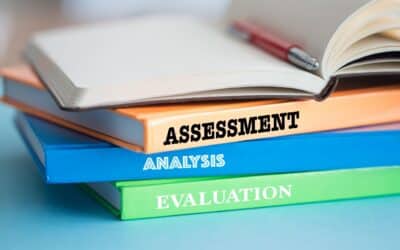In the worlds of coaching, consulting, HR, and professional development, assessments are everywhere. So how can formative and summative assessments benefit you? If you’re coaching a client, leading a team, or running a development program, assessments are essential. They allow you to measure growth, improvement in performance, and show impact.
To get real value from them, you’ve got to understand the difference between these two powerful tools, and more importantly, when and how to use each one.While both types aim to measure performance and progress, they do so in very different ways.
Below, we’ll unpack the difference between formative and summative assessments. You’ll see practical examples, and learn how to combine both for maximum impact. Whether you’re building a coaching program or evaluating team performance, understanding these tools is key to creating meaningful growth.
What Is a Formative Assessment?
A formative assessment is a tool used during the learning or development process. It’s all about improvement in the moment. Think of it as your GPS, giving you directions as you drive and helping you stay on course.
They’re meant to surface issues early, track development, and make sure everything is headed in the right direction.
Formative assessments help you tweak strategy, pivot quickly, and maximize your impact. Because it’s iterative, a formative assessment is like having a rearview mirror and a steering wheel at the same time, helping you reflect just enough to change direction before it’s too late!
Benefits of Formative Assessments
Why use formative assessments? Because they don’t just measure success, they help shape it.
In professional settings where growth is ongoing and expectations are high, formative assessments act as real-time feedback tools that allow individuals and teams to adjust, improve, and stay on track. They’re not about pass or fail… they’re about progress.
Here’s what makes them so valuable:
- Continuous Feedback: Formative assessments provide frequent, real-time insights that help participants understand how they’re doing and where they can improve before final outcomes are determined.
- Early Course Correction: By identifying gaps or misunderstandings early on, individuals and teams can pivot before issues escalate, saving time, resources, and potential frustration.
- Increased Engagement: When people can track their progress and see tangible improvements, they feel more connected and committed to the process.
- Greater Accountability: Regular check-ins promote personal responsibility and encourage participants to stay focused and proactive in their development.
- Stronger Trust and Transparency: Giving individuals meaningful opportunities to share what’s working and what isn’t builds psychological safety and a culture of openness.
- Personalized Support: Formative assessments help leaders, coaches, and facilitators tailor their approach based on where each person is in their journey.
Ultimately, the biggest benefit of formative assessments is that they make growth collaborative. They turn feedback into a shared conversation, and that’s where real transformation begins.
Formative Assessment Examples
Imagine you’re in the middle of a team project. Things seem to be running smoothly, but you want to be sure everyone’s aligned. So, you send out a quick pulse survey asking team members how they feel about communication, collaboration, and progress. You receive responses that highlight some communication gaps you weren’t aware of. You act on that feedback, realign expectations, and the project improves dramatically.
That’s a formative assessment in action.
In a coaching or workplace context, this could also look like:
- Mid-Program Coaching Check-In: Ask clients to rate confidence, mindset, or clarity halfway through a coaching program.
- Team Pulse Survey: During a complex project, check in to assess communication, stress levels, or team alignment.
- Pre-Review Reflection Form: Before an annual performance review, employees reflect on wins, challenges, and development areas.
What Is a Summative Assessment?
A summative assessment takes place at the end of a process. It’s more like your final report card or a project debrief. It doesn’t help you change course, but rather shows whether the journey was a success. This is the tool that reveals outcomes, solidifies understanding, and often informs bigger decisions.
Summative assessments are the final scorecards. They measure what’s been accomplished, typically at the end of a program, training, or review period. They’re the tools used to demonstrate results, compare goals to outcomes, and communicate impact to stakeholders. Examples of these could include performance reviews or 360 assessments.
These assessments help validate your strategy and build credibility with clients, leadership, or your own team.

Benefits of Summative Assessments
Summative assessments are all about the finish line, providing clear, measurable evidence of what was achieved. In business, coaching, or organizational development, they play a key role in evaluating outcomes, demonstrating impact, and closing the loop on initiatives.
Here’s why they’re essential:
- Proof of Progress: Summative assessments deliver tangible, data-driven results that show what’s been learned, improved, or accomplished.
- Strategic Reporting: Whether you’re reporting to stakeholders, measuring ROI, or creating benchmarks, these assessments provide the credibility and clarity needed to justify decisions and investments.
- Milestone Recognition: They offer a sense of closure and achievement, giving individuals and teams the opportunity to celebrate progress and reflect on what they’ve gained.
- Actionable Insights for the Future: By reviewing final outcomes, teams can identify what worked, what didn’t, and how to improve next time. This turns results into smart planning.
- Professional Credibility: Summative data builds trust with clients, executives, or partners by backing up your work with hard evidence and transparent outcomes.
At their core, summative assessments help you show your impact, not just feel it. They validate growth, inform your next steps, and support confident decision-making across any professional setting.
Summative Assessment Examples
Imagine a coaching program that lasted six months. At the end, you gather data: mindset scores from the start and end of the journey, feedback on skill development, and a final reflection from the client. You then compile this into a transformation summary, clearly showing the client’s progress, challenges overcome, and where they landed. That’s your summative assessment.
In HR, summative assessments often appear as annual performance reviews. They look back at a year’s worth of contributions, behaviors, and outcomes. While some may argue they’re retrospective in nature, when done right, these assessments validate success, provide recognition, and set the stage for future development.
Unlike formative assessments, summative assessments are less about the journey and more about the destination. They don’t tell you how to improve, but they tell you whether the efforts paid off.
Formative vs Summative Assessment: A Side-by-Side Comparison
While formative assessments are diagnostic and developmental, summative assessments are evaluative and reflective. One shapes the process; the other validates the result. Knowing this difference is key to leveraging each type effectively.
How do you know which assessment to use, and when?
Formative assessments are best used during a project, engagement, or learning journey. They’re perfect for:
- Ongoing coaching engagements where alignment needs regular check-ins
- Leadership training programs with evolving goals
- Team projects that require flexibility and quick course corrections
- Learning programs focused on continuous improvement
Summative assessments, by contrast, are used after the work is done. Use them when:
- A program or project has concluded and you need to report outcomes
- You’re measuring KPIs or final performance metrics
- Creating reports for clients or internal leadership
- Reviewing team or employee development over a defined period
Below is a comprehensive, side-by-side look at the criteria for each:

How to Combine Formative and Summative Assessments for Maximum Impact
High-performing teams and professionals don’t treat these assessments as either/or. Why? One tells you how you’re doing, and the other proves how you did.
Here’s how you can create a structured feedback ecosystem that leverages both:
- Start Formative: Use intake assessments and regular pulse check-ins
- Stay Agile: Adapt using insights from mid-phase evaluations
- Finish Strong with Summative: Deliver a summative report with measurable results
Start with a baseline assessment to get clear on where people are starting from. As the project or program unfolds, conduct formative assessments like pulse surveys, check-ins, or coaching reflections to adjust as needed. Then, at the end, use a summative assessment to capture results and celebrate progress.
This approach gives you the best of both worlds: adaptability in the moment and accountability in the end.
Tools like Agolix make this even easier, offering automated workflows and templates that help structure these feedback loops. With the right platform, you don’t just track growth—you make it visible.
Common Mistakes to Avoid When Building Formative & Summative Assessments
Even the best assessment strategies can go off track without careful planning. Here are a few common mistakes to avoid:
- Too many questions: Overwhelm leads to low response rates.
- Measuring irrelevant data: Focus on goals, not vanity metrics.
- Unclear language: Vague questions = weak insights.
- Poor timing: Summative too early or formative too late? You miss the mark.
- Not acting on feedback: If you collect it, use it.
- Generic templates: One-size-fits-all rarely fits anyone.
- Bad user experience: Boring or confusing formats reduce engagement.
Many professionals ask too many questions, leading to survey fatigue and lower engagement. Others measure the wrong metrics, focusing on what’s easy to track and not what truly matters. Timing is another issue. Skipping formative assessments or conducting summative ones too early can skew your understanding.
Perhaps the biggest misstep is collecting feedback, but doing nothing with it. When people take the time to respond, they expect to see action. Ignoring that breaks trust and defeats the purpose of the assessment.
Which Assessment Type Is Best for You?
It’s not about choosing between formative and summative. It’s about choosing to be intentional with your growth strategy.
If you’re focused on building trust, fostering engagement, and encouraging reflection, then formative assessments are your best friend. If you need to report results, benchmark performance, or prove value, summative assessments will do the job.
- Need to adapt, learn, and grow during the journey? Use a Formative Assessment.
- Need to prove your impact and close the loop? Use a Summative Assessment.
- Want to be strategic, smart, and scalable? Use both.
When used together, both become a powerful engine for transformation. One guides the journey, while the other tells the story of how far you’ve come.
Make Growth Measurable at Every Stage
This isn’t about choosing between formative or summative assessments. The real power comes from using both, strategically and in sync.
Used together, they provide a 360° view of performance, progress, and potential. They capture not just how far someone has come, but how they got there and where they’re headed next.
If you’re serious about making feedback more than a checkbox, and want to turn it into a tool for real growth, it’s time to build a smarter system.
Agolix gives you the power to do exactly that. Create and automate both formative and summative assessments, generate insights that drive action, and elevate the way you measure success from start to finish. Get started here today!





